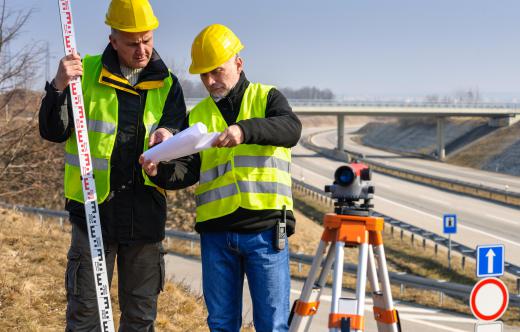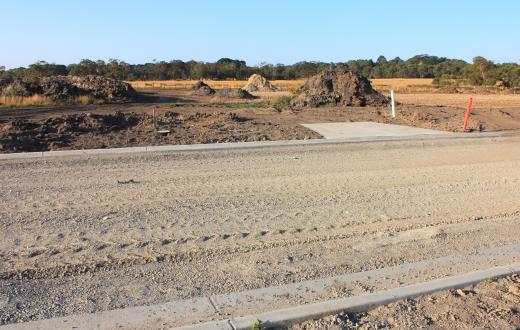A level staff is a measuring rod which land surveyors sight through a telescope to calculate the slope, or difference in elevation, between two locations. Whatever their material construction, most all models can be adjusted in height, either telescopically or with additional sectional attachments. Also called a leveling rod, its use is based on one of the simplest principles of geometry.
They can be a single long rod, but surveying land on foot requires some measure of portability. A lightweight aluminum level staff may have nested sections which telescope out and lock for height adjustment. Wooden types may be made in separate sections that connect end-to-end and lock, as needed. All have graduated numeric markings, either imperial or metric measurements, in large, visible print. They are, basically, very long rulers with a functional resolution of about 0.1 inch (2.5mm).

Additionally, there are two different types of level staffs, which correspond to who is determining the measurement. A “target rod” is read by the rodman, the individual holding the level staff. Another type, a “self-reading rod," is read by the instrument man. The latter, sometimes called a “speaking rod,” is sighted and recorded by the individual looking through a telescope mounted on a tripod from afar.

Target rods are mounted with a sliding target that is marked with crosshairs and cut with a keyhole in the center. With hand signals or by radio, the instrument man instructs the rodman to slide the target up or down until its crosshairs match the crosshairs in his telescope. These are also sometimes called stadia marks.
There are a few other level staffs differently designed for specialized applications. A topographer’s rod has a zero-mark in the center and is useful for continuous recording of the pluses and minuses of wildly undulating elevation contours of an area of land. So-called standia rods are oversized versions of a level staff used for longer distances.
The geometry of measuring elevation change is quite simple. The sighting instrument used by most surveyors is called a theodolite, and the adjustable legs of its tripod mount can be adjusted to ensure that the telescopic sight is truly level. Its height above the ground is recorded.
At a practical distance of up to 410 feet (125m) for most models, a vertical level staff is viewed to record the measurement indicated by the telescope’s crosshairs. The difference between the two measurements is the change in elevation. If the exact distance is also recorded, a simple calculation of triangulation yields a measurement of the elevation change in degrees, or slope.
